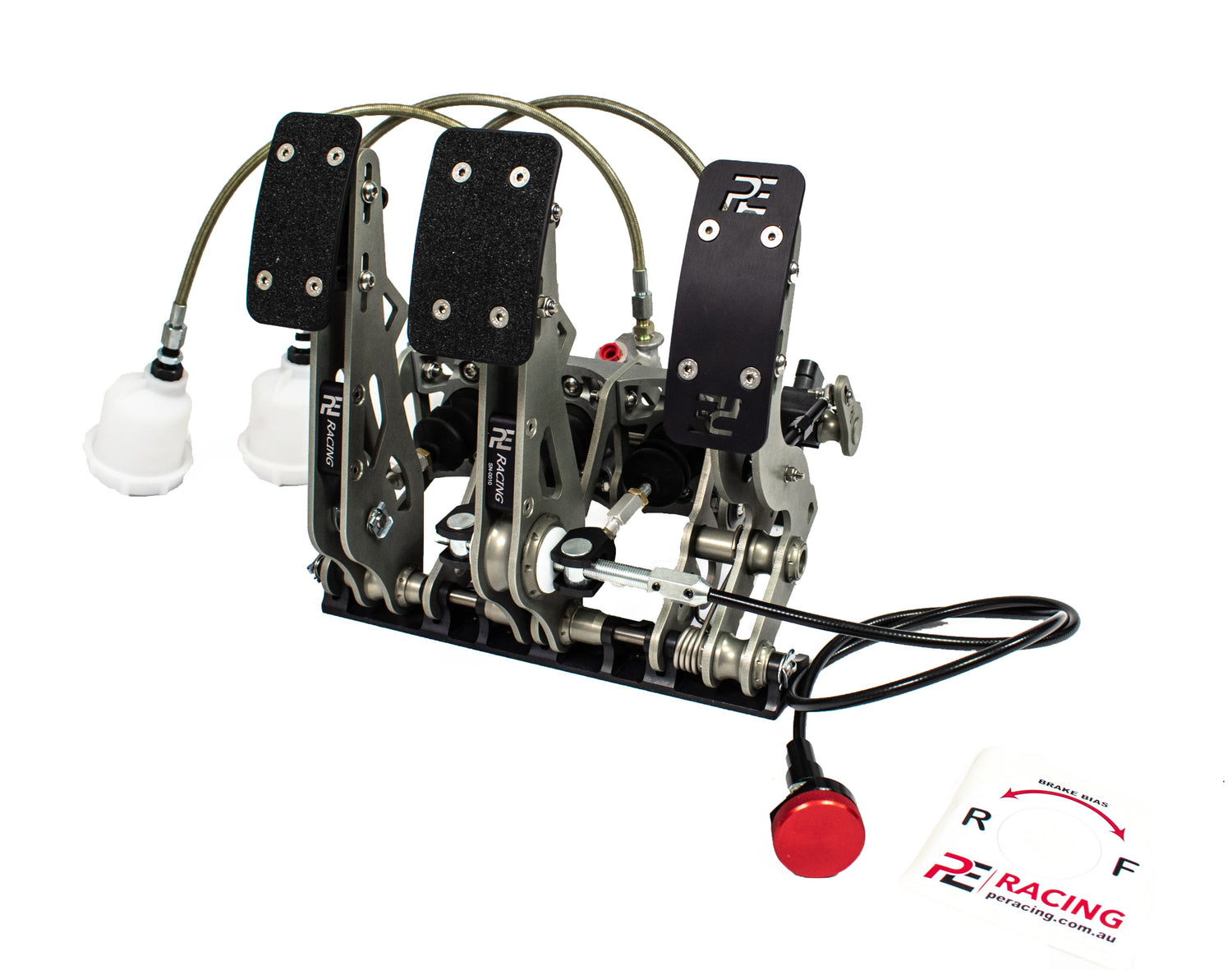It's a no brainer that brakes are critical safety systems. But it's important to consider their role in your performance on the track.
This article delivers really useful information about Race Car braking, how the braking system works and what elements are involved that impact on Race Car brake performance.
Remember, races are won by having consistent & efficient braking, not just cornering and accelerating. We will touch on cornering and accelerating another time.
Let's dive into the how the braking system works.
A brief history of Fluid Mechanics.
Fluid Mechanics is the study of Fluids. There are several branches, fluid at rest is commonly known as Fluid Statics, while Fluid in motion is known as Fluid Dynamics.
The study of pressurised systems also has several branches.
Pneumatics is the study of pressurised air systems and Hydraulics is the study of pressurised fluid systems.
The term Hydraulics originates from a Greek term hydraulikos, which originated from 2 words referring to water and pipe. Pascal (1623–1662) studied fluid hydrodynamics and hydrostatics, centred on the principles of hydraulic fluids.
Pascal established Pascal’s Law and is the namesake of the SI unit for pressure, the Pascal (Pa), being a force on an area, specifically 1Pa is equal to 1 Newton force per Square Metre in the area (or Pa=N/m²).
Mathematically, Pascal found the amount of pressure resulting from a column of fluid would be a function of the height of the column and the density of the fluid. Later experiments with U-tubes filled with water with varying size pistons and tube diameter led to the invention of the Hydraulic press.
The hydraulic press, multiplied a smaller force acting on a smaller area, to a larger force totalled over a larger area. This was a great example of leverage or mechanical advantage while using a fluid, and typical of many hydraulic systems today.
Brake System Hydraulics.
The mechanical lever, known as the brake pedal, accepts the mechanical force input from the driver’s foot. The hydraulic brake system on a vehicle starts at the fluid reservoir, then master cylinder, hydraulic lines and ends at the calipers. The master cylinder converts a pedal force to fluid pressure and is responsible for the amount of pressure in a brake line feeding a brake caliper.
The fluid pressure at the caliper pushes the piston/s to squeeze the brake pads to the rotors. Via friction between the brake pads & rotors, you have a given resistance known as braking.
Any portion of a brake system that acts on the fluid or carries fluid is part of the braking system. This includes the pedal, lever, linkages, pushrods, reservoirs, master cylinders, hard brake lines, proportional valves, flexible brake lines, brake bias bars, calipers, pads & rotors.
Race Car Hydraulic System Performance
If you have ever changed a master cylinder, brake line or caliper on a vehicle, you are probably quite familiar with how air trapped in the brakes hydraulic system affects its performance.
A spongy pedal or brakes that simply don’t work are usually the result of air getting into the hydraulic system. Proper bleeding of the system to remove the air from the system restores the functionality of the hydraulics.
While brake fluid is considered incompressible, naturally it does an excellent job of transferring a pressure increase across the entire system, the air simply compresses and fails to transmit the effort put in at the pedal.
Since most of today’s vehicles incorporate an ABS system into the hydraulics, it’s important to follow the vehicle manufacturer’s recommendations for bleeding the system. In most cases, bleeding is started at the caliper furthest from the master cylinder. Using a suction type bleeder can be helpful in removing stubborn air pockets from the brake system.
Hydraulic Ratios
On a factory vehicle, a group of engineers determines the exact amount of pedal travel and pedal resistance they desire for the driver. By varying the bore size of the master cylinder, the pedal ratio and the total piston area of the calipers pistons, engineers establish total pedal travel and pedal effort.
The amount of travel that OEM’s set generally pretty long with ABS system activation occurring a couple of inches off the floor in a properly working system. A long pedal travel minimises effort while maximising modulation (the ability to vary the degree of braking applied).
For a racing application, there may be a desire to shorten the pedal travel to allow full braking power to come sooner. One way to accomplish this is to increase the master cylinder bore. While this will reduce the pedal travel, it will come at the cost of increased pedal effort.
Of course, braking systems feature some type of assist (vacuum or electric), may not reveal the increase in pedal effort in full.
Conversely changing to a master cylinder with a smaller bore will result in increased pedal travel, decreased effort and improved modulation.


